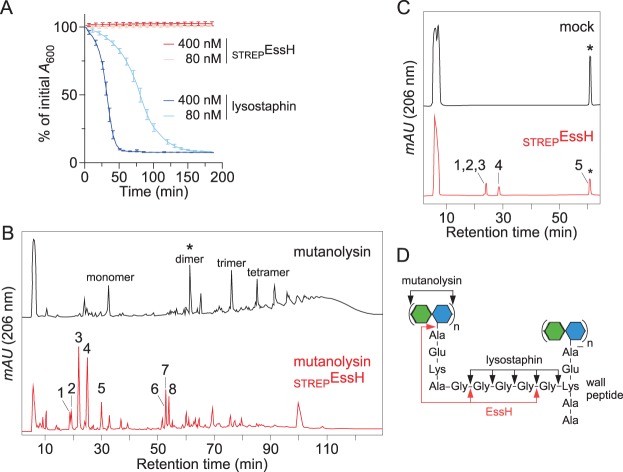FIG 4.
EssH exhibits amidase and endopeptidase activities. (A) Overnight cultures of S. aureus USA300 LAC* were treated with lysostaphin or STREPEssH, and lysis was measured as a decline in A600 over time. (B) Purified S. aureus peptidoglycans were digested with mutanolysin and split into two samples that were either left untreated (black trace) or were treated with purified STREPEssH (red trace); the carbohydrates in both samples were reduced and analyzed by reversed-phase HPLC. Peaks labeled were desalted and analyzed by MALDI-TOF mass spectrometry; observed m/z are reported in Table 1 alongside their structural interpretation. The asterisk identifies the cross-linked muropeptide dimer of S. aureus (m/z 2,438.59). (C) A sample of purified muropeptide dimer (*) was split into two parts, either left untreated (mock) or treated with STREPEssH (red trace), and analyzed by reversed-phase HPLC. Individual peaks were desalted and analyzed by MALDI-TOF mass spectrometry; observed m/z are reported in Table 2 alongside their structural interpretations. (D) Diagram of cross-linked S. aureus peptidoglycan with arrows identifying the bonds that are cleaved by mutanolysin, lysostaphin, and EssH. mAU, milli-absorbance units; green and blue hexagons, N-acetylglucosamine and N-acetylmuramic acid, respectively.

